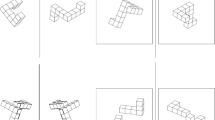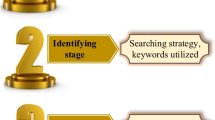Abstract
Spatial orientation is crucial when subjects have to accurately reach memorized visual targets. In previous studies modified gravitoinertial force fields were used to affect the accuracy of pointing movements in complete darkness without visual feedback of the moving limb. Target mislocalization was put forward as one hypothesis to explain this decrease in accuracy of pointing movements. The aim of this study was to test this hypothesis by determining the accuracy of spatial localization of memorized visual targets in a perturbed gravitoinertial force field. As head orientation is involved in localization tasks and carrying relevant sensory systems (visual, vestibular and neck muscle proprioceptive), we also tested the effect of head posture on the accuracy of localization. Subjects (n=10) were seated off-axis on a rotating platform (120° s−1) in complete darkness with the head fixed (head-fixed session) or free to move (head-free session). They were required to report verbally the egocentric spatial localization of visual memorized targets. They gave the perceived target location in direction (i.e. left or right) and in amplitude (in centimeters) relative to the direction they thought to be straight ahead. Results showed that the accuracy of visual localization decreased when subjects were exposed to inertial forces. Moreover, subjects localized the memorized visual targets more to the right than their actual position, that was in the direction of the inertial forces. With further analysis, it appeared that this shift of localization was concomitant with a shift of the visual straight ahead (VSA) in the opposite direction. Thus, the modified gravitoinertial force field led to a modification in the orientation of the egocentric reference frame. Furthermore, this shift of localization increased when the head was free to move while the head was tilted in roll toward the center of rotation of the platform and turned in yaw in the same direction. It is concluded that the orientation of the egocentric reference frame was influenced by the gravitoinertial vector.






Similar content being viewed by others
Notes
The Coriolis force is related to the mass of a moving segment in a rotating frame, its velocity in the rotating frame and the angular velocity of the rotating frame of reference. Centrifugal force is related to the product of the square angular velocity, the mass of the subject in rotation, and the distance of the subject relative to the center of rotation.
Equation 1 is the Probit function used to evaluate the VSA. Variables: P i =probability for the ith target to be perceived to the right, i=target number, j=trial number; Parameters: C0=target for P=0.5, n=power of the effect
References
Biguer B, Prablanc C, Jeannerod M (1984) The contribution of coordinated eye and head movements in hand pointing accuracy. Exp Brain Res 55:462–469
Blouin J, Vercher J-L, Gauthier GM, Paillard J, Bard C, Lamarre Y (1995) Perception of passive whole-body rotations in the absence of neck and body proprioception. J Neurophysiol 74:2216–2219
Bock O, Arnold KE, Cheung BSK (1996a) Performance of a simple aiming task in hypergravity: I. overall accuracy. Aviat Space Environ Med 67:127–132
Bock O, Arnold KE, Cheung BSK (1996b) Performance of a simple aiming task in hypergravity: II. Detailed response characteristics. Aviat Space Environ Med 67:133–138
Bourdin C, Gauthier GM, Blouin J, Vercher J-L (2001) Visual feedback of the moving arm allows complete adaptation of pointing movements to centrifugal and coriolis forces. Neurosci Lett 301:25–28
Bourdin C, Prieur J-M, Sarès F, Gauthier GM, Menu J-P, Montmayeur A (2002) Head position control and target localization performance in changing gravito-inertial field. RTO HFM Symposium on “Spatial disorientation in military vehicles: causes, consequences and cures”. RTO-MP-086.
Bringoux L, Schmerber S, Nougier V, Dumas G, Barraud PA, Raphel C (2002) Perception of slow pitch and roll body tilts in bilateral labyrinthine-defective subjects. Neuropsychology 40:367–372
Bringoux L, Tamura K, Faldon M, Gresty MA, Bronstein AM (2004) Influence of whole-body pitch tilt and kinesthetic cues on the perceived gravity-referenced eye level. Exp Brain Res 155:385–392
Clement G, Moore ST, Raphan T, Cohen B (2001) Perception of tilt (somatogravic illusion) in response to sustained acceleration during space flight. Exp Brain Res 138:410–418
Coello Y, Orliaget JP, Parblanc C (1996) Pointing movement in an artificial perturbing inertial field: a prospective paradigm for motor control study. Neuropsychology 34:879–892
Cohen MM (1977) Disorienting effects of aircraft catapult launching: III. cockpit displays and piloting performance. Aviat Space Environ Med 48:797–804
Cohen MM, Stoper AE, Welch RB, DeRoshia CW (2001) Effects of gravitational and optical stimulation on the perception of target elevation. Percept Psychophys 63:29–35
Cusack R, Carlyon RP, Robertson IH (2001) Auditory midline and spatial discrimination in patient with unilateral neglect. Cortex 37:706–709
Darling WG, Miller GF (1995) Perception of arm orientation in three-dimensional space. Exp Brain Res 102:495–502
Desmurget M, Pélisson D, Rossetti Y, Prablanc C (1998) From eye to hand: planning goal-directed movements. Neurosci Biobehav Rev 22:761–788
Dizio P, Lackner JR (1995) Motor adaptation to Coriolis force perturbations of reaching movements: endpoint but not trajectory adaptation transfers to the nonexposed arm. J Neurophysiol 74:1787–1792
Farne A, Ponti F, Ladavas E (1998) In search of biased egocentric reference frames in neglect. Neuropsychology 36:611–623.
Fisk J, Lackner JR, Dizio P (1993) Gravitoinertial force level influences arm movement control. J Neurophysiol 69:504–510
Fookson OV, Smetanin BN, Berkinblit MB, Adamovich SA, Feldman G, Poizner H (1994) Azimuth errors in pointing to remembered targets under extreme head rotations. Neuroreport 5:885–888
Goldberg FE, Fernandez C (1984) The vestibular system. In: Smith I (ed) Handbook of physiology. The nervous system, vol 3. New York, Academic Press, pp 977–1021
Howard IP (1986) The preception of posture, self motion, and the visual vertical. In: Boff K, Kaufman L, Thomas J (eds) Handbook of perception and human performance. Wiley, New York, pp 1–62
Howard IP, Templeton WB (1966) Human spatial orientation. Wiley, London
Jeannerod M (1988) The neural and behavioural organization of goal-directed movements. Oxford University Press, Oxford
Karn KS, Moller P, Hayhoe MM (1997) Reference frames in saccadic targeting. Exp Brain Res 115:267–282
Karnath HO, Sievering D, Fetter M (1994) The interactive contribution of neck muscle proprioception and vestibular stimulation to subjective ‘‘straight ahead’’ orientation in man. Exp Brain Res 101:140–146
Lackner JR, Dizio P (1998) Gravitoinertial force background levels affects adaptation to coriolis force perturbations of reaching movements. J Neurophysiol 80:546–553
Lackner JR, Dizio P (1994) Rapid adaptation to Coriolis force perturbation of arm trajectory. J Neurophysiol 72:299–313
Lacquaniti F (1997) Frames of reference in sensorimotor coordination. In: Boller F, Grafman J (eds) Handbook of neuropsychology. Elsevier, Amsterdam, pp 27–64
Lewald J, Ehrenstein WH (2000) Visual and proprioceptive shifts in perceived egocentric direction induced by eye-position. Vision Res 40:539–547
Maurer C, Kimming H, Trefzer A, Mergner T (1997) Visual object localization through vestibular and neck inputs. 1: Localization with respect to space and relative to head and trunk mid-sagital planes. J Vest Res 7:119–135
McDougall HG, Curthoys IS, Betts GA, Burgess AM, Halmagyi GM (1999) Human ocular conterrolling during roll-tilt centrifugation. Ann NY Acad Sci 28:173–180
Mergner T, Nasios G, Maurer C, Becker W (2001) Visual object localization in space: interaction of retinal, eye position, vestibular and neck proprioceptive information. Exp Brain Res 141:33–51
Mittelstaedt H (1983) A new solution to the problem of the subjective vertical. Naturwissenschaften 70:272–281
Mittelstaedt H (1988) The information processing structure of the subjective vertical. A cybernetic bridge between its psychophysics and its neurobiology. In: Marko H, Hauske G, Struppler A (eds) Processing structures for perception and action. VCH, Weinheim, pp 217–263
Moore ST, Clément G, Raphan T, Cohen B (2001) Ocular counterrolling induced by centrifugation during orbital. Exp Brain Res 137:323–335
Paillard J (1991) Motor space and representational framing of space. In: Paillard J (ed) Brain and Space. Oxford University Press, Oxford, pp 163–182
Sarès F, Prieur J-M, Bourdin C, Gauthier GM, Blouin J, Vercher J-L (2002) Peripheral visual information influence head posture during gravitoinertial changes. Curr Pychol Cog 21:455–477
Sarès F, Bourdin C, Prieur J-M, Vercher J-L, Gauthier GM (2004) Head positioning control in a gravitoinertial field and in normal gravity. J Vestib Res 14: 321–333
Soechting JF, Tillery SIH, Flanders M (1990) Transformation from head- to shoulder-centered representation of target direction in arm movements. J Cogn Neurosci 2:32–43
Woodman PD, Griffin MJ (1997) Effect of direction of head movement on motion sickness caused by coriolis stimulation. Aviat Space Environ Med 62:93–98
Young LR (1984) Perception of the body in space: mechanisms. In: Geiger SR (ed) Handbook of physiology III/1. Bethesda, pp 1023–1066
Acknowledgements
This work was supported by grants from Dassault aviation. Special thanks to Citroën Competition for the bucket seat, to Alain Donneaud for technical expertise, and to Frank Buloup for programming.
Author information
Authors and Affiliations
Corresponding author
Rights and permissions
About this article
Cite this article
Prieur, JM., Bourdin, C., Vercher, JL. et al. Accuracy of spatial localization depending on head posture in a perturbed gravitoinertial force field. Exp Brain Res 161, 432–440 (2005). https://doi.org/10.1007/s00221-004-2087-7
Received:
Accepted:
Published:
Issue Date:
DOI: https://doi.org/10.1007/s00221-004-2087-7




